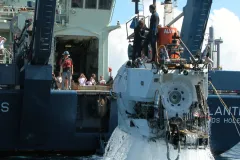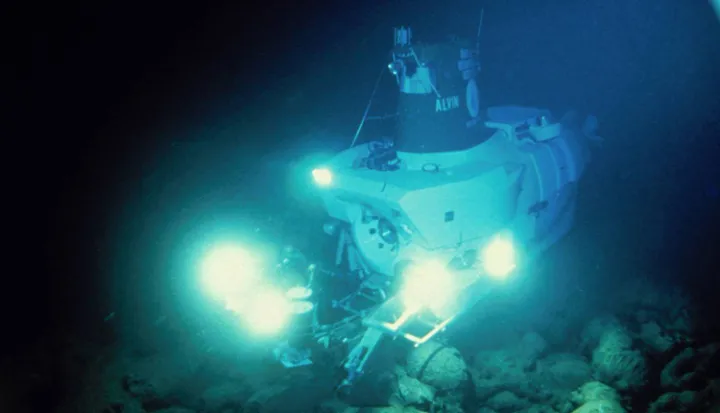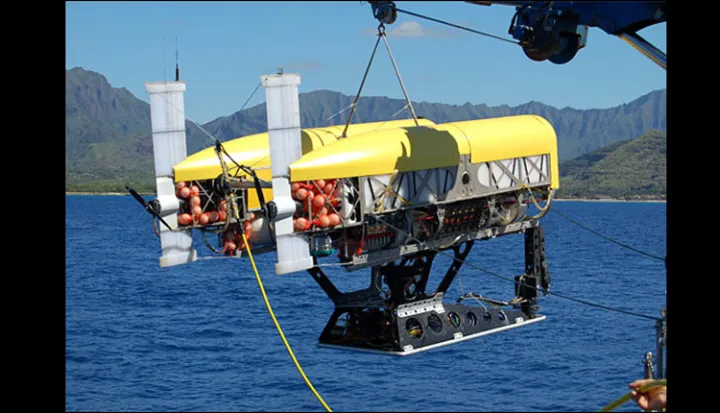From Submarines to Robots: Exploring the Deep Ocean

Filmmaker and National Geographic Explorer James Cameron on March 25, 2012, became the first human to complete a solo submarine dive to Challenger Deep, an undersea valley in the Mariana Trench of the Pacific Ocean known as the deepest surveyed spot on the planet. Cameron piloted the one-person submersible DEEPSEA CHALLENGER to the area that is 11,000 meters, or 6.8 miles, beneath the ocean surface in 2 hours and 36 minutes, gathering data, specimens, and images throughout the mission. The only other manned submersible to reach Challenger Deep was more than 50 years before--the 1960 dive of the Trieste with Capt. Don Walsh (U.S. Navy-ret.) and engineer Jacques Piccard.
Underwater technology has come a long way since the 1960s. In May of 1964 the Alvin took its first free dive—all the way to 10.7 meters (35 feet) below the surface. Today, scientists have access to a wide range of technologies that routinely carry them down to 4,500 meters (14,764 feet) and enable them to study the deepest parts of the ocean. Human occupied vehicles (HOVs), like the Alvin, transport up to three people directly to the seafloor. HOVs are built to withstand the extreme pressures of the deep ocean and are equipped with robotic arms that scoop up marine creatures as well as seafloor sediments.
Remotely operated vehicles (ROVs) are robots tethered to the ship. Scientists on the ship manipulate an ROV through a long cable that connects the robot to the ship. ROVs can reach great depths and stay there for extended periods. Autonomous underwater vehicles (AUVs) are robots pre-programmed to collect data from particular parts of the deep ocean. While they’re off collecting data, scientists conduct other research on board the ship. Hybrid vehicles combine the best features of ROVs and AUVs. On May 31, 2009, one hybrid vehicle—the Nereus—reached the deepest part of the ocean, the Mariana Trench. It dived 10,902 meters (6.8 miles) below the surface—quite a bit deeper than Alvin’s 1964 dive. We can only imagine what new underwater technologies will accomplish 50 years from now.



